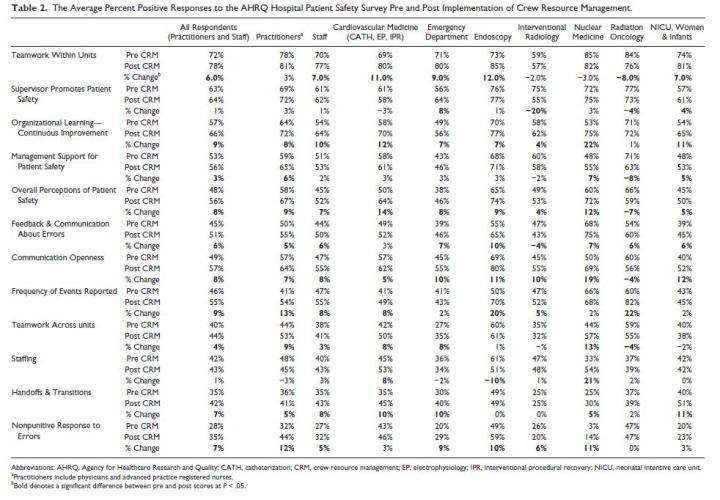How can medical centers transform their patient safety culture?

Though healthcare is not without risks or error, hospital employees can support a culture of patient safety by identifying, reporting, and learning from medical mistakes that have or could have harmed patients. In a new study, a training program focusing on team communication, leadership, and decision-making practices, known as Crew Resource Management (CRM), was found to improve perceptions of the safety culture by 8% over the course of two years. This study, the largest of its kind, is out today in the American Journal of Medical Quality.
"Safety culture was significantly improved after CRM training, with the strongest effects in employees' perception of teamwork and communication," commented researchers Hefner et al. "This study was the first health-system wide CRM implementation reported in the literature; the findings show that large-scale cultural transformation is possible, even in large, multi-hospital academic medical centers."
CRM is an approach to training teams to function effectively under demanding or unpredictable situations. The program consists of safety tools, such as checklists, standard protocols, and communication scripts, which help teams establish and follow routine procedures when responding to situations. CRM also addresses conflict management, cross-checking colleagues' actions, and articulating concerns to others.
In the study, the CRM training took place across an academic medical center's eight departments, which spanned three hospitals and two campuses. Staff and health practitioners took a survey measuring their perceptions of workplace patient safety culture before the training and again two years later. Comparing 784 survey responses from 2011 to 667 responses from 2013 after the employees received training and had two years to apply its principles, the employees reported:
- A 9% increase in organizational learning/continuous improvement
- A 9% increase in frequency of mistakes reported, enabling employees to address potential safety issues
- An 8% increase in communication openness
- A 6% increase in teamwork within departments
- A 4% increase in teamwork across departments
For successful large-scale cultural transformations, the researchers wrote that leadership engagement and endorsement must be continuous. They also recommend putting into place a system, such as a hospital-wide steering committee, to monitor the adoption and use of CRM safety tools. This system should also monitor the occurrence of avoidable medical mistakes both in specific departments and the center overall, and to communicate any potential improvements to employees so they can provide the best care possible for all patients.
More information: "Cultural Transformation After Implementation of Crew Resource Management: Is It Really Possible?", by Hefner et al, American Journal of Medical Quality.
















